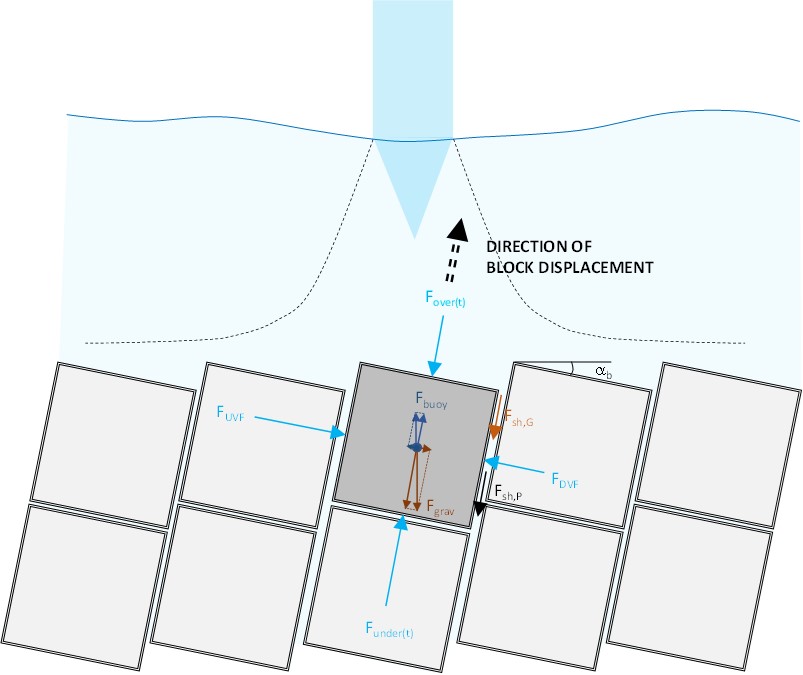
Background
The QSI method has been developed by Dr Bollaert in 2010 and published in 2012 ( Wall jet rock scour in plunge pools: a quasi-3D prediction model, Journal of Hydropower and Dams, 2012). This method has proven to be very useful to predict the shape of scour holes upstream and downstream of the point of jet impingement, i.e. in areas where wall jets form along the water-rock interface.
The X_pl@re platform proposes a novel and enhanced version of this method. This enhanced version of the QSI method is called hereafter the MQSI (2021) method. The main differences with the original QSI ly in the additional consideration of shear forces in the lateral joints generated by differential water pressures acting in these joints, and in pulsating lift forces generated by flow deviation at protruding blocks, while the original model only considers quasi-steady (time-averaged) net uplift pressures.
These pulsating lift forces are determined similar to the MDI (2021) method, i.e. by considering the pressure fluctuations at the joint entrances. Based on the latest available literature data, amongst others the laboratory experiments on 3D blocks as described by Liu et al. (1998), Federspiel (2010), Federspiel and Bollaert (2013) and Pells (2016), a direct relationship between fluctuating pressures at the block surface and the related net fluctuating uplift forces on the block has been established.
Features
The main features of the novel MQSI (2021) method can be summarized as follows:
- user-definable added mass resisting to rock block accelerations
- user-definable additional shear forces in the lateral joints in between rock blocks, generated by net pressure differences acting on the upper and lower vertical faces (i.e. lateral joints) of the block
- user-definable additional pulsating lift force generated by block protrusion, valid during a limited time duration, and superposed to the time-averaged component of the lift force
- specific wall jet velocity decay relationships valid for circular-shaped and rectangular-shaped jets
- specific wall jet velocity decay relationships valid for jets impacting the plunge pool under an oblique angle, for both circular and rectangular-shaped jets, and based on the jet diameter at impact in the plunge pool Dj
- user-definable drag and lift force coefficients, as a function of the local geometric rock block position compared to its surroundings (i.e. aligned, protruding, etc.)


Areas of application
The MQSI (2021) method is applicable to the following types of turbulent flow impacting the water-rock interface:
- vertically impinging jets
- obliquely impinging jets
- circular and rectangular shaped jets
- nappe flows
- any other turbulent flows quasi-parallel to the interface
